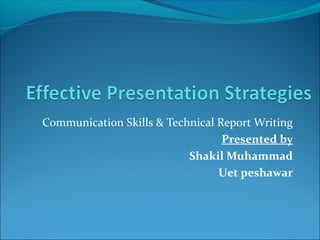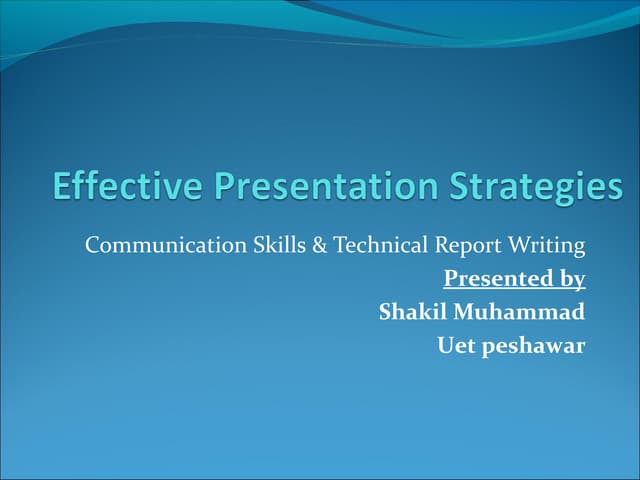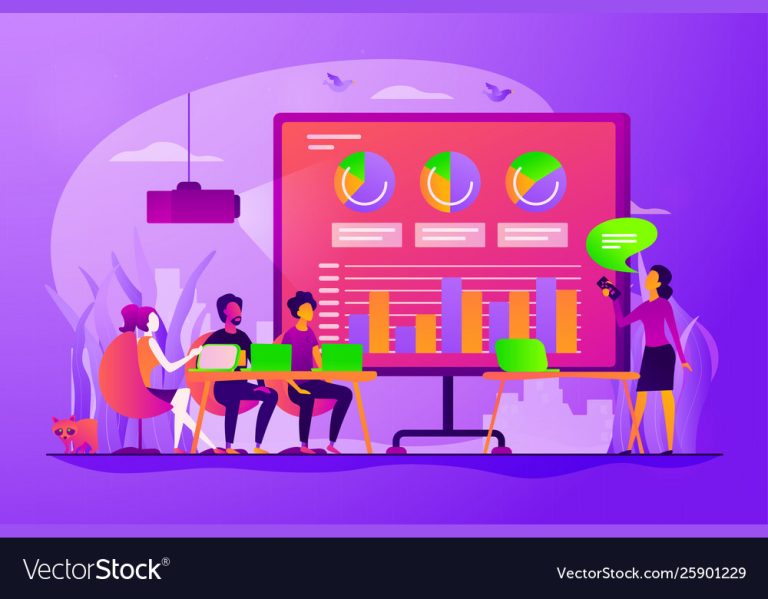What are Presentation Strategies?
Presentation strategies refer to the thought-out plans and ideas used to deliver a message effectively to a specific audience. These strategies aim to capture the attention and engage the listeners or viewers, ensuring that the presentation is impactful and memorable.
Whether it’s a short five-minute talk or a lengthy presentation, having a clear strategy in place will save time and enhance the overall effectiveness of the presentation. By understanding who the target audience is and tailoring the presentation to meet their needs, presenters can create a compelling and engaging experience that resonates with the audience and achieves its intended objectives.
Understanding The Basics
Presentation strategies refer to the thought-out plans and ideas behind effectively delivering a message to an audience. It involves understanding the audience, creating a clear and organized structure, and utilizing visual aids to enhance communication. Having a solid presentation strategy saves time and ensures the message is effectively conveyed.
Defining Presentation Strategies
Presentation strategies refer to the techniques and methods used to effectively deliver information and engage an audience during a presentation. These strategies involve careful planning and preparation to ensure that the message is clear, compelling, and memorable. Whether it’s a business pitch, educational lecture, or sales presentation, having a well-developed presentation strategy can greatly enhance the impact and effectiveness of your delivery.
Importance Of Presentation Strategies
Effective presentation strategies are crucial for several reasons:
- Captivate your audience: Presentation strategies help capture the attention of your audience from the start and keep them engaged throughout the presentation. By utilizing various techniques such as storytelling, visual aids, and interactive elements, you can create a captivating experience that leaves a lasting impression.
- Communicate your message effectively: Presentation strategies enable you to convey your message in a clear, concise, and organized manner. They help you structure your content, prioritize key points, and ensure that your audience understands and retains the information you present.
- Enhance credibility and professionalism: A well-executed presentation demonstrates your expertise and professionalism. Thoughtful planning and strategic delivery can enhance your credibility, making it more likely that your audience will trust and remember the information you share.
- Persuade and influence: Presentation strategies offer opportunities to persuade and influence your audience. By using persuasive techniques, such as presenting compelling arguments, addressing objections, and appealing to emotions, you can increase the likelihood of achieving your desired outcome, whether it’s gaining buy-in, securing a deal, or inspiring action.
Elements Of An Effective Presentation
Several elements contribute to the success of a presentation. By considering and implementing these elements, you can maximize the impact of your message:
- Clear objectives: Establish clear objectives for your presentation. What do you want to achieve? Define your goals and tailor your content and delivery to align with them.
- Audience analysis: Understand your audience’s needs, interests, and knowledge level. This will allow you to adapt your presentation to resonate with and engage your specific audience.
- Engaging opening: Capture your audience’s attention from the beginning with a compelling opening. Consider using a story, asking a thought-provoking question, or sharing a surprising statistic to pique their interest.
- Well-structured content: Organize your content in a logical and easy-to-follow manner. Use a well-defined introduction, body, and conclusion to guide your audience through your presentation smoothly.
- Visual aids: Utilize visual aids such as slides, videos, or props to enhance understanding and engagement. These visual elements can reinforce key points, provide examples, and create a more dynamic presentation experience.
- Effective delivery: Pay attention to your delivery style, including your tone, pace, and body language. Maintain eye contact, use gestures purposefully, and speak clearly and confidently to connect with your audience.
- Audience interaction: Incorporate interactive elements to involve your audience actively. Encourage questions, facilitate discussions, and incorporate activities or demonstrations to boost engagement and participation.
- Compelling End your presentation with a strong and memorable conclusion. Summarize the key points, reiterate the main message, and leave your audience with a clear call to action or takeaway.
Presentation strategies are essential for creating impactful and memorable presentations. By following these guidelines, you can enhance your communication skills, captivate your audience, and achieve your presentation goals.
Preparing For A Presentation
Presentation strategies encompass the thought, planning, and idea of who the audience is and how they will receive and utilize the message. It’s essential to have a clear strategy, even for a short presentation, to ultimately save time and deliver an effective message.
PRESENTITUDE™ offers services that focus on presentation strategy.
When it comes to delivering a successful presentation, preparation is key. Taking the time to plan and organize your presentation can make a significant difference in how well you engage with your audience and deliver your message. There are several important steps to take when preparing for a presentation:
Conducting Audience Research:
Before diving into the content of your presentation, it’s important to understand your audience. Conducting audience research allows you to tailor your presentation to their needs, interests, and background. Here are some key points to consider:
- Identify the demographics of your audience, such as age, gender, profession, and education level.
- Understand their prior knowledge or experience on the topic to determine the appropriate level of detail.
- Determine their motivations, challenges, and pain points related to your presentation topic.
- Consider any cultural or social factors that may impact how your audience receives your message.
Setting Clear Objectives:
Setting clear objectives for your presentation helps you stay focused and ensures that your audience understands what you’re trying to achieve. Here’s how to establish effective objectives:
- Define the main purpose of your presentation. Are you trying to inform, persuade, or entertain?
- Identify the key messages you want your audience to take away from your presentation.
- Specify the desired outcome or action you want your audience to take after listening to your presentation.
- Keep your objectives realistic and achievable within the time frame of your presentation.
Organizing Content Flow:
Having a well-organized content flow is essential for maintaining your audience’s interest and helping them follow along with your presentation. Here are some strategies to organize your content effectively:
- Start with a compelling introduction that grabs your audience’s attention and provides an overview of what you’ll be discussing.
- Use a logical structure such as a chronological order, problem-solution format, or compare-contrast approach to present your content.
- Break down complex information into smaller, digestible chunks to prevent overwhelming your audience.
- Transition smoothly between different sections of your presentation using clear signposting.
- Summarize key points and provide a clear conclusion that reinforces your main messages.
By conducting audience research, setting clear objectives, and organizing your content flow, you’ll be well-prepared to deliver a powerful and engaging presentation. Remember to practice your delivery and visual aids beforehand to ensure a smooth and confident performance. Good luck!
Creating Engaging Visuals
Presentation strategies are essential for creating engaging visuals that effectively communicate your message to the audience. By carefully planning and considering the needs and interests of your listeners or viewers, you can design presentations that are impactful, memorable, and achieve the desired outcomes.
Whether it’s a short session or a longer presentation, a well-thought-out strategy saves time and maximizes the effectiveness of your message. PRESENTITUDE™ provides presentation strategy services to help you deliver impactful presentations.
Visuals play a crucial role in capturing the attention of your audience and enhancing the overall impact of your presentation. To create visually appealing and engaging presentations, consider the following strategies:
Choosing The Right Visual Format
- Utilize appropriate images, charts, graphs, or diagrams that align with your presentation topic and goals.
- Select visuals that are clear, relevant, and visually appealing to your audience.
- Ensure that the chosen visual format is suitable for the content you want to convey.
- Use colors, fonts, and design elements that are cohesive with your branding or presentation theme.
Utilizing Visual Hierarchy
- Organize your visuals in a logical manner, using a hierarchy that guides the audience’s attention.
- Highlight key information or messages through the use of size, color, or placement.
- Employ whitespace effectively to reduce clutter and improve visual focus.
- Structure your visuals in a way that supports the flow of your presentation and enhances understanding.
Incorporating Multimedia Elements
- Enhance your presentation by incorporating multimedia elements such as videos, audio clips, or animations.
- Use multimedia strategically to bring concepts to life, demonstrate processes, or provide real-world examples.
- Ensure that multimedia elements are high-quality, relevant, and seamlessly integrated into your presentation.
- Remember to test the multimedia elements beforehand to avoid technical glitches or distractions.
By implementing these strategies, you can create engaging visuals that enhance the impact of your presentation and effectively convey your message to your audience. So, choose the right visual format, utilize visual hierarchy, and incorporate multimedia elements to make your presentations visually captivating and memorable.
Delivering A Compelling Presentation
Crafting a successful presentation involves careful planning and strategizing. It’s essential to have a clear idea of your target audience and the message you want to convey. By optimizing your presentation strategy, you can effectively engage your listeners and achieve your desired outcomes.
When it comes to delivering a compelling presentation, there are several strategies you can employ to captivate your audience and effectively communicate your message. In this section, we’ll explore three key areas that can help you deliver a presentation that leaves a lasting impression.
Captivating Opening Statements:
- Start with a thought-provoking question: Begin your presentation with a question that gets your audience thinking. This will immediately engage their attention and create a sense of curiosity.
- Share a surprising statistic: Start with a surprising or shocking statistic related to your topic. This will grab your audience’s attention and make them eager to learn more.
- Tell a compelling story: Open your presentation with a personal or inspirational story that relates to your topic. This will create an emotional connection with your audience and draw them in.
Effective Communication Techniques:
- Use visual aids: Incorporate visuals such as slides or props to enhance your presentation. Visuals can help clarify your message and make it more memorable for your audience.
- Speak with confidence: Project your voice, maintain good eye contact, and use gestures to convey confidence and authority. This will help you establish credibility and keep your audience engaged.
- Use storytelling techniques: Use storytelling techniques to deliver your information in a compelling and relatable way. This can help captivate your audience and make your presentation more memorable.
Managing Nervousness And Body Language:
- Practice, practice, practice: The more you practice your presentation, the more confident you will feel. Rehearse your speech multiple times to familiarize yourself with the content and reduce nervousness.
- Control your body language: Pay attention to your body language throughout your presentation. Stand tall, maintain good posture, and use open gestures to project confidence and engagement.
- Take deep breaths: If you feel nervous or anxious, take deep breaths to calm your nerves. Deep breathing can help reduce stress and improve your overall delivery.
Remember, delivering a compelling presentation requires careful thought and preparation. By using captivating opening statements, effective communication techniques, and managing your nervousness and body language, you can deliver a presentation that will leave a lasting impact on your audience.
Supporting Your Presentation
Presentation strategies refer to the thoughtful planning and execution of a presentation, with a focus on the target audience and desired outcomes. By strategically considering the message and audience, individuals can save time and deliver more impactful presentations. PRESENTATION STRATEGY | PRESENTITUDE™
Using Persuasive Supporting Evidence:
- Incorporate relevant statistics and data: Support your presentation by including accurate and compelling statistics and data to back up your main points. This will help to enhance your credibility and make your arguments more persuasive.
- Use real-life examples: Illustrate your ideas with concrete examples that your audience can relate to. Real-life examples bring your points to life and make them more memorable for your listeners.
- Include expert opinions and quotes: Cite opinions or quotes from industry experts or authoritative sources to strengthen your arguments. This shows that you have done thorough research and adds credibility to your presentation.
- Share testimonials or case studies: If you have success stories or testimonials from satisfied customers or clients, use them to demonstrate the effectiveness of your product or service. Real-life experiences make your points more tangible and convincing.
- Use visual aids: Utilize visually appealing charts, graphs, or images to present data and information in a visually compelling way. Visual aids not only make your presentation more engaging but also help your audience better understand and retain the information.
Engaging The Audience Through Interactivity:
- Ask rhetorical questions: Begin your presentation by asking thought-provoking questions that make your audience reflect on the topic. This creates a sense of engagement and encourages active participation.
- Conduct polls or surveys: Incorporate interactive elements such as polls or surveys to involve your audience in the presentation. This not only adds an element of interactivity but also provides valuable insights and feedback.
- Encourage audience participation: Allow time for questions and discussions during your presentation. By giving your audience the opportunity to actively participate, you create a more engaging and interactive environment.
- Use storytelling techniques: Weave compelling stories into your presentation to captivate your audience’s attention and evoke an emotional connection. Stories help to make your content more relatable and memorable.
- Incorporate multimedia elements: Include videos, audio clips, or interactive multimedia elements to create a multi-sensory experience for your audience. This variety keeps them engaged and prevents their attention from waning.
Addressing And Responding To Questions:
- Anticipate potential questions: While preparing your presentation, think about the questions your audience may have and address them proactively. This demonstrates that you are well-prepared and knowledgeable about the topic.
- Allocate time for Q&A: Dedicate a specific time slot at the end of your presentation for questions and answers. This gives your audience the opportunity to seek clarification and engage in a dialogue.
- Active listening and empathy: When addressing questions, actively listen to the questioner and show empathy. Repeat or summarize the question to ensure understanding and provide a thoughtful response.
- Be concise and clear in your answers: Keep your answers focused and concise, delivering them in a straightforward and understandable manner. Avoid rambling or using jargon that may confuse your audience.
- Use visual aids for complex explanations: If a question requires a more detailed explanation, use visual aids such as diagrams or flowcharts to simplify complex concepts and make them easier to understand.
Remember, supporting your presentation with persuasive evidence, engaging the audience through interactivity, and effectively addressing and responding to questions are essential strategies for delivering a successful presentation. By following these techniques, you can captivate your audience, enhance their understanding, and leave a lasting impact.

Credit: www.slideshare.net
Finalizing Your Presentation
Crafting an effective presentation strategy involves carefully considering your audience, message, and goals. By strategically planning and aligning your presentation with the needs and preferences of your listeners, you can ensure maximum impact and engagement. Save time and achieve success by starting with a clear strategy.
Enjoy the benefits of a well-prepared presentation.
Before delivering your presentation, it is essential to finalize and prepare yourself to ensure a successful delivery. This involves rehearsing and practicing your delivery, managing your time effectively, and seeking evaluation and feedback. Let’s explore each of these strategies in detail:
Rehearsing And Practicing Delivery:
- Rehearse your presentation multiple times to familiarize yourself with the content and flow.
- Practice in front of a mirror or record yourself to identify areas for improvement.
- Pay attention to your body language, gestures, and voice modulation.
- Practice speaking clearly and confidently, maintaining a steady pace.
- Consider using visual aids such as slides to enhance your presentation.
Time Management Strategies:
- Create a timeline or schedule to allocate specific time slots for each section of your presentation.
- Be mindful of the time allocated and avoid exceeding the allotted time.
- Practice pacing your delivery to ensure you cover all the key points within the given time frame.
- Rehearse transitions between different sections to maintain a smooth flow.
Evaluating And Seeking Feedback:
- Seek honest feedback from trusted colleagues, friends, or mentors who can provide constructive criticism.
- Consider conducting a mock presentation for a smaller audience to gauge their reaction and gather feedback.
- Analyze your presentation objectively, focusing on areas that need improvement.
- Implement the feedback received to refine your presentation and enhance its overall effectiveness.
By rehearsing and practicing your delivery, managing your time effectively, and seeking evaluation and feedback, you can ensure that your presentation is well-prepared and confidently delivered. These finalizing strategies will help you deliver a compelling presentation that engages your audience and effectively conveys your message.
Frequently Asked Questions On What Are Presentation Strategies?
What Do You Mean By Presentation Strategy?
A presentation strategy is a plan for delivering your message effectively to your audience. It involves considering who will listen, learn, or act on your message and how to best convey your ideas. A well-thought-out strategy can save you time and make your presentation more impactful.
What Are Strategies Of Presentation Skills?
Presentation strategies involve developing a clear plan and understanding your audience to effectively convey your message.
What Are The Most Effective Strategies For Presentation?
The most effective strategies for presentation include carefully planning your message, knowing your audience, using visual aids like slides, practicing your delivery, and engaging your audience.
What Are 4 Strategies Tips To Consider When Presenting?
Here are 4 strategies tips for presenting: 1. Keep your sentences short and to the point. 2. Optimize your writing for SEO and make it unique and easy to understand. 3. Avoid using certain phrases and passive voice in your sentences.
4. Make sure your content passes AI writing detection and sounds natural.
Conclusion
Presentation strategies are crucial for effective communication and engagement with your audience. It all starts with a well-thought-out plan and understanding of who will be listening to your message. Whether it’s a five-minute pitch or a full-scale presentation, having a presentation strategy in place will save you time and ensure that your message is clear and impactful.
By developing a presentation strategy, you can tailor your content, visuals, and delivery to resonate with your specific audience. This strategy will help you capture and maintain their attention, convey your message effectively, and achieve your desired outcomes. It’s about understanding your audience’s needs, crafting a compelling story, and utilizing appropriate techniques to engage and persuade them.
Remember, a presentation strategy is not just about the content; it’s about the overall approach you take to capture your audience’s interest and deliver your message with impact. So, before you step onto the stage or open your virtual presentation, take the time to develop a well-rounded presentation strategy that will elevate your communication skills and leave a lasting impression on your audience.




